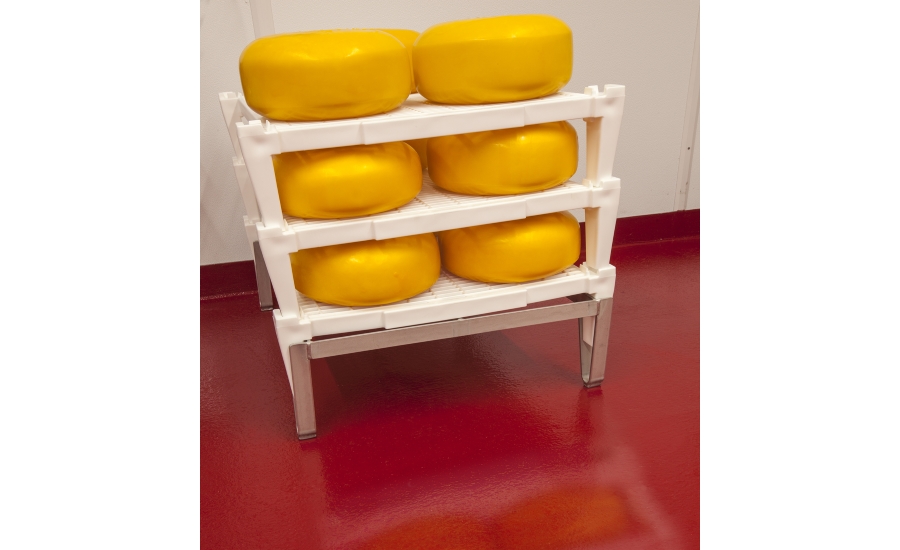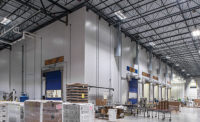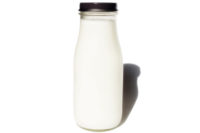It seems that making beer and making cheese are two very different things. In the fall of 2012, two friends who routinely made beer together tried to make cheese for the first time. Amusingly, their first attempt was not a success—the result didn’t taste like cheese at all. Unfazed and ready to try again, the result this time was a tasty cheddar. With the encouragement of friends and family taste testers – and the addition of another friend, a dairy expert, to the team—the entrepreneurial trio founded CannonBelles Cheese in Cannon Falls, Minnesota.
With partners Deeann Lufkin, Kathy Hupf and Jackie Ohmann investing in formal cheese-making education, taking field trips to other cheese makers and expanding operations, the business has aged like a fine cheese ever since.
When it came time to construct a new cheese manufacturing facility, CannonBelles needed a durable, cleanable floor (Figure 1) that checked many boxes. The system needed to withstand rigorous cleanings, promote employee and food safety, and perform well in a variety of spaces and environments – including production and storage areas for the burgeoning company’s artisan cheeses, such as the 2017 American Cheese Society’s First Place winner, a signature savory Queso Fresco.
 Figure 1. The multi-layered floor in the production and storage areas of the new CannonBelles Cheese facility was designed to hold up to daily cheesemaking and vigorous cleanings.
Figure 1. The multi-layered floor in the production and storage areas of the new CannonBelles Cheese facility was designed to hold up to daily cheesemaking and vigorous cleanings.
Striking the Right Flooring Balance
Much as the flavors of a fine cheese must strike a delicate balance, so must a dairy facility’s floor. It must provide a raised grip for footing to prevent falls, yet also have a low enough texture profile to prevent liquids from pooling and promoting bacterial growth.
The flooring also needs to last for years, so durability was high on the list for CannonBelles. To stand up to innumerable wash-downs, the facility’s production floor would need to contend with acids and near-boiling water required for cleaning in varying conditions—including rooms with near-freezing temperatures and others with high humidity and heat (for cultivating cultures).
Not every floor is up to the challenge. While researching flooring options, the trio of cheesemakers became aware of dairy facilities needing to replace poor-quality epoxy-based floors after short periods of time, due to frequent washing that caused cracking and peeling.
“Having faith in your floor is worth the research and cost to do it right the first time,” said Lufkin. “We wanted a floor that allowed us to focus on what we do best—making cheese.”
Finding the Right Pairing
When it was time to specify flooring for the new facility, Advantage Coating of Chaska, Minnesota, worked with Sherwin-Williams High Performance Flooring to find the right solution.
Advantage Coating serves a five-state area and is well known for its highly trained employees and their use of advanced equipment and premium products. The two companies arranged a partnership and settled on a solution that would meet CannonBelles’ needs for durability, safety and cleanability. A urethane concrete flooring system with grit broadcast into it for slip resistance and an integral cove base included for ease of cleaning was chosen for CannonBelles’ highly specific needs.
“Food and beverage facilities typically require frequent hot water wash-downs of their floors,” said Jim Ernst, founder and president of advantage coating. “Mild detergents may also be used. However, the primary cleaning method is very hot water washes, and this subjects the flooring to the thermal shock of immediate temperature changes of the material. We eliminated epoxy materials from consideration because they can run the risk of becoming brittle and cracking over time due to thermal shock. The urethane concrete system used here features greater flexibility to withstand those drastic temperature fluctuations.”
According to Ernst, the combination of a urethane polymer with concrete creates a mixture that is one of the most durable flooring materials on the market. In addition, it is highly resistant to temperature fluctuations, chemical exposures and moisture vapor transmission, all of which were required for the CannonBelles flooring installation.
Urethane concrete is also self-leveling, which helps the material lie down smoothly, eliminating additional installation steps for Advantage Coating and downtime for the facility. Although floor functionality is most often the priority in food production facilities, aesthetics may also be important when considering employee workspaces and the visibility of the flooring to customers. Another upside of the urethane material is that it can be combined with pigmented topcoats for additional appeal, ease of recognizing spills and greater durability.
 Figure 2. The red color of the floor allows workers to spot spills more easily and serves as the facility’s designated “clean zone,” which promotes the sanitary requirements of production and storage areas.
Figure 2. The red color of the floor allows workers to spot spills more easily and serves as the facility’s designated “clean zone,” which promotes the sanitary requirements of production and storage areas.
The vivid red floor CannonBelles chose for its production and storage areas has also proven to be an attention-grabber (Figure 2). Chosen to align with the company’s brand palette and aesthetic, the color has allowed for more thorough cleanings.
“Many cheese-related products stand out on a red floor. If we had gotten a grey floor, for instance, we’d probably spot fewer spills,” said Lufkin. “Plus, we designate that red floor is ‘clean floor,’ meaning anyone who steps on a red area must be dressed appropriately – helping us maintain sanitary conditions.”
Creating a Recipe for Flooring Success
Concrete for the newly constructed CannonBelles facility was poured 90 days prior to the flooring installation, allowing sufficient time for the slabs to properly cure. A four-person crew from Advantage Coatings installed the three-coat flooring system in just five days—including floor preparation and staging, as well as the application of the Sherwin-Williams High Performance Flooring system featuring a satin urethane sealer. The system included Eco-Crete SF (a heavy-duty cementitious urethane slurry), Eco-Crete TC (a cementitious urethane grout coat) and Eco-HTS (a satin urethane topcoat). This fast-curing system allows for foot traffic 24 hours after the final coat, enabling subsequent building construction steps to resume quickly.
According to Ernst, this installation featured wide open spaces before any equipment was installed, so there were no application slowdowns related to navigating the bases and legs of equipment. “We have a skilled crew, and the unobstructed working conditions at CannonBelles allowed this installation to go quickly and smoothly,” he said. “The only obstacles of note were floor drains (Figure 3), where we took great care to ensure proper buildup of the flooring material and create a smooth transition from the floor to the drain – with no gaps where water could undercut the flooring.”
 Figure 3. A careful crafting and installation of flooring material at drain interfaces provides continuity to drains and prevents standing water that could reduce cleanliness in the short term and undermine the flooring system’s integrity over time.
Figure 3. A careful crafting and installation of flooring material at drain interfaces provides continuity to drains and prevents standing water that could reduce cleanliness in the short term and undermine the flooring system’s integrity over time.
Following the Steps to a Durable Floor
Cheese making requires high quality ingredients and combining them in six basic, sequential steps. The highly durable, easy-to-clean floor for CannonBelles also required careful sequential steps to apply the high-quality coatings with precision and skill.
First, installers had to prepare the new concrete for the floor coating system application. They shot blasted the floor to a Concrete Surface Profile (CSP) of 3-4, creating a profile that helps the coating layers applied on top bond with the concrete substrate. While the concrete was new, well over 30 days had passed since it was poured, which meant installers didn’t have to worry about using materials designed for application to green concrete.
Next, installers applied the first coating layer—Eco-Crete SF, a heavy-duty self-flowable polyurethane cement slurry with excellent corrosion and chemical resistance. The material is thermal shock resistant and withstands temperature variations from -330 to 250°F. Installers applied the coating at about a 3/16-in. dry film thickness (DFT) using a gauge rake and then broadcast sand grit into the system to rejection (broadcast sand grit into the wet base coat until no more of the base coat can be seen) which added traction to the floor surface.
Eco-Crete SF is low odor, fast curing, impact and abrasion resistant. Most importantly it is steam cleanable and resistant to moisture vapor transmission. With the sand broadcast into the coating, it features an anti-slip surface that meets ADA recommendations. It is also helps resist fungi growth, as outlined in the ASTM G-21 (a standard antifungal product test plastics and polymeric materials).
Installers then applied layer two, Eco-Crete TC, a cementitious urethane grout/topcoat, at about 1/8 in. The coating was applied using a squeegee followed by a light roll to encourage an even, self-leveled finish. This layer adds thickness for additional durability and provides excellent chemical resistance. It also locks in the grit that was broadcast into first layer.
“The extra buildup of this layer helps improve impact resistance and floor system longevity. Thicker is better in this installation—but not so thick that the coating would build above the plane of the grit and diminish its slip resistance capabilities,” said Ernst.
The application of the topcoat, Eco-HTS 100, required a dip and roll technique using a 3/8-in. nap roller to ensure a uniform finish. This topcoat layer is low odor, low VOC and provides excellent chemical resistance at its 2 to 3-mil. DFT application thickness. The material is also 100% aliphatic (UV stable) which minimizes the potential for yellowing over time to keep floors looking fresh and new.
Thanks to its high traffic satin finish, this industry-leading topcoat can last up to twice as long as standard urethanes and four times as long as standard epoxies. In addition, the thin film application of Eco-HTS 100 allows the slight texture from the broadcast grit to remain on the surface, helping to deter slip and fall accidents.
 Figure 4. In wash-down areas, an integral cove base prevents liquids from seeping into seams by providing a smooth floor-to-wall transition.
Figure 4. In wash-down areas, an integral cove base prevents liquids from seeping into seams by providing a smooth floor-to-wall transition.
As part of the flooring installation, Advantage Coating also created an integral cove base (Figure 4) in areas subject to wash-downs. This seamless floor-to-wall transition will help prevent water from seeping into the floor-wall joint and into the substrates, where hidden bacteria could grow and proliferate in any residual moisture. The integral cove base enables water from washdown activities to effectively flow away from the wall, down the properly sloped surface to the floor drains (Figure 5).
The new flooring system also offers many advantages over traditional tile/dairy brick floors, which have networks of filled seams, or “grout lines.” Under heavy use, the grout lines can begin to break down, allowing bacteria and other sources of food-borne illness to enter and proliferate in the hard-to-clean crevices.
The cleanable properties of the new seamless flooring system help CannonBelles stay in compliance with dairy industry regulations and pass local and state health inspections. This helps ensure the facility can continue making its high-quality cheeses uninterrupted.
“Our floor helps us stay as food-safe as possible. As an artisan company, it is of utmost importance to our brand and reputation,” said Lufkin. “Plus, life is much easier when your inspectors are happy.”
 Figure 5. Floor drains are properly sloped to promote drainage—and prevent the pooling of water and other slippery substances that could compromise worker safety.
Figure 5. Floor drains are properly sloped to promote drainage—and prevent the pooling of water and other slippery substances that could compromise worker safety.
Growing with Award-Winning Cheese
The three friends and business partners of CannonBelles report that the company is thriving since setting up shop in their new building, where they produce, package and store their award-winning offerings of gouda, cheddar varieties and queso fresco.
“The flooring system has proven to be perfect for helping us enter a new, exciting phase of growth and production,” said Lufkin. “The professional team from Advantage Coating advised us every step of the way on aspects that us cheese makers may not have thought about. We felt confident with their product expertise and professional installation. They were top notch talent, and we wouldn’t settle for anything less.”





Report Abusive Comment